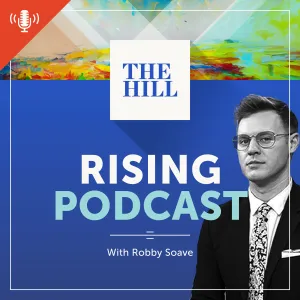The CBO is pulling no punches on the dire deficit outlook

You don’t need to get very far into the new Budget and Economic Outlook issued by the Congressional Budget Office (CBO) last week to discover that this report is a punch in the gut. The first sentence of the overview section bluntly states, ”annual deficits over the 2024-2033 period average $2.0 trillion.”
Average annual deficits of $2 trillion? Is that a typo?
No, unfortunately, it is not a typo. Projected 10-year deficits are now $3.1 trillion higher than they were over a comparable period in CBO’s last report (May 2022). In every year between 2024 and 2033, budget deficits are at or above 5.5 percent of GDP. According to CBO, deficits have not remained that high for more than five consecutive years since at least 1930. By 2033, CBO projects that the deficit will equal 6.9 percent of GDP.
These are deficit numbers that might be associated with a temporary spike caused by a major economic downturn or a prolonged military conflict. But no such calamities are projected in the CBO baseline and the “spike” is not temporary. What used to be anomalous is now routine.
This alarming transformation did not happen by accident. It is the inevitable result of past legislative decisions to raise spending, cut taxes and live on borrowed money with reckless disregard for the consequences.
Among those consequences is that debt held by the public is projected to double over the next 30 years, reaching 195 percent of the gross domestic product (GDP) by 2053. Not surprisingly, the cost of servicing that rising debt reaches a historical high at 3.6 percent of GDP in 2033 and continues climbing to 7.3 percent of GDP in 2053.
The economic effects of the COVID pandemic certainly play a factor in CBO’s more pessimistic outlook, particularly through higher inflation and interest rates. But roughly half of the $3.1 trillion increase in projected deficits since May 2022 comes from legislative actions — things that Congress and the president have direct control over. They have not stopped digging the hole deeper.
Moreover, with few exceptions, politicians have steadfastly refused to take a hard look at why the debt is on such an unsustainable path. As the budgetary effects of COVID recede, a familiar pattern is revealed: Spending growth is dominated by Social Security, health care programs and interest on the debt. As CBO observes, outlays rise from 2023 to 2033 “largely because of rising interest costs and greater spending on programs that provide benefits to elderly people.”
To put that observation into context, Social Security, the major healthcare programs (primarily Medicare and Medicaid), and interest on the debt comprise 56 percent of federal spending now but rise to 65 percent by 2033 in CBO’s baseline. By contrast, discretionary spending, which reflects defense and non-defense appropriations, falls as a share of the budget from 29 percent to 24 percent. Intended or not, this represents a clear shifting of priorities.
Revenue rises in the baseline but not by nearly enough to keep pace with spending. In fact, CBO’s revenue baseline is likely to be optimistic because it includes the current law assumption that a portion of the tax cuts enacted in 2017 will be allowed to expire after 2025. It seems unlikely that candidates of either party in 2024 will run on a promise to “raise your taxes.” So it would not be surprising if some of the revenue assumed in the baseline after 2025 fails to materialize, forcing deficits even higher.
It seems equally unlikely that 2024 candidates will embrace significant cuts in Social Security benefits or Medicare provider payments, but that possibility is now in plain view regardless of the expressed bipartisan desire to “stand up for seniors.” Medicare’s Hospital Insurance trust fund and Social Security’s Old Age and Survivors Insurance trust fund are now both projected to become insolvent within CBO’s 10-year outlook.
Under current law, trust fund insolvency would limit the expenditures of these programs to their incoming revenues, which are already insufficient to cover all payments. This would force delaying payments to beneficiaries and providers, effectively reducing them by 15 percent for Medicare and 22 percent for Social Security.
Baseline conventions require CBO to assume that all payments will be made in full and on time despite the insolvency of the trust funds, but that assumption begs the question: How will the government obtain the resources to make those payments? Will it raise taxes, reduce spending, or simply fill any gap with general revenues? In any event, legislative action will be required. Policymakers and the public should understand that doing nothing to address insolvency will result in automatic benefits cuts.

We all need to confront the fact that an aging population, higher per-person healthcare costs and rising interest payments have created a perpetual debt machine rising to unsustainable levels on autopilot. This cycle was created through legislative action and it will take legislative action to set a more responsible course.
The House and Senate budget committees should squarely face that challenge as they begin the fiscal year 2024 budget process in the coming weeks. The best thing about CBO’s gut punch is that it is only a projection and Congress still has time to avoid the blow.
Robert L. Bixby is the executive director of The Concord Coalition
Copyright 2023 Nexstar Media Inc. All rights reserved. This material may not be published, broadcast, rewritten, or redistributed. Regular the hill posts













